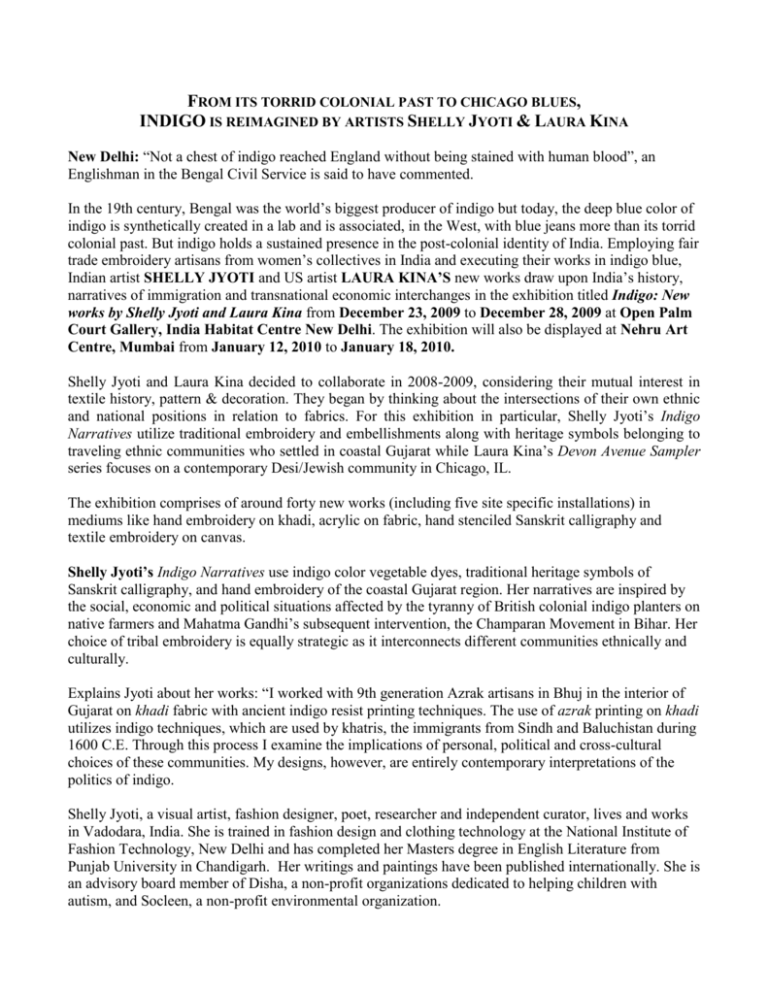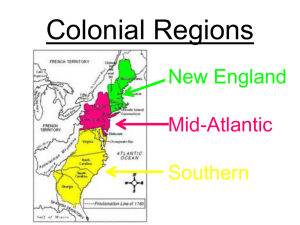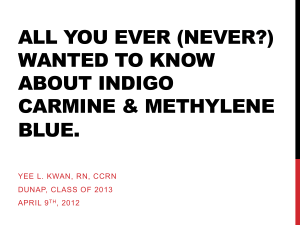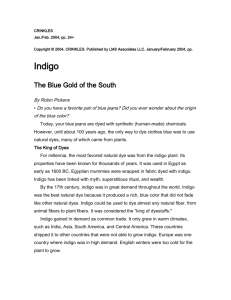press release
advertisement

FROM ITS TORRID COLONIAL PAST TO CHICAGO BLUES, INDIGO IS REIMAGINED BY ARTISTS SHELLY JYOTI & LAURA KINA New Delhi: “Not a chest of indigo reached England without being stained with human blood”, an Englishman in the Bengal Civil Service is said to have commented. In the 19th century, Bengal was the world’s biggest producer of indigo but today, the deep blue color of indigo is synthetically created in a lab and is associated, in the West, with blue jeans more than its torrid colonial past. But indigo holds a sustained presence in the post-colonial identity of India. Employing fair trade embroidery artisans from women’s collectives in India and executing their works in indigo blue, Indian artist SHELLY JYOTI and US artist LAURA KINA’S new works draw upon India’s history, narratives of immigration and transnational economic interchanges in the exhibition titled Indigo: New works by Shelly Jyoti and Laura Kina from December 23, 2009 to December 28, 2009 at Open Palm Court Gallery, India Habitat Centre New Delhi. The exhibition will also be displayed at Nehru Art Centre, Mumbai from January 12, 2010 to January 18, 2010. Shelly Jyoti and Laura Kina decided to collaborate in 2008-2009, considering their mutual interest in textile history, pattern & decoration. They began by thinking about the intersections of their own ethnic and national positions in relation to fabrics. For this exhibition in particular, Shelly Jyoti’s Indigo Narratives utilize traditional embroidery and embellishments along with heritage symbols belonging to traveling ethnic communities who settled in coastal Gujarat while Laura Kina’s Devon Avenue Sampler series focuses on a contemporary Desi/Jewish community in Chicago, IL. The exhibition comprises of around forty new works (including five site specific installations) in mediums like hand embroidery on khadi, acrylic on fabric, hand stenciled Sanskrit calligraphy and textile embroidery on canvas. Shelly Jyoti’s Indigo Narratives use indigo color vegetable dyes, traditional heritage symbols of Sanskrit calligraphy, and hand embroidery of the coastal Gujarat region. Her narratives are inspired by the social, economic and political situations affected by the tyranny of British colonial indigo planters on native farmers and Mahatma Gandhi’s subsequent intervention, the Champaran Movement in Bihar. Her choice of tribal embroidery is equally strategic as it interconnects different communities ethnically and culturally. Explains Jyoti about her works: “I worked with 9th generation Azrak artisans in Bhuj in the interior of Gujarat on khadi fabric with ancient indigo resist printing techniques. The use of azrak printing on khadi utilizes indigo techniques, which are used by khatris, the immigrants from Sindh and Baluchistan during 1600 C.E. Through this process I examine the implications of personal, political and cross-cultural choices of these communities. My designs, however, are entirely contemporary interpretations of the politics of indigo. Shelly Jyoti, a visual artist, fashion designer, poet, researcher and independent curator, lives and works in Vadodara, India. She is trained in fashion design and clothing technology at the National Institute of Fashion Technology, New Delhi and has completed her Masters degree in English Literature from Punjab University in Chandigarh. Her writings and paintings have been published internationally. She is an advisory board member of Disha, a non-profit organizations dedicated to helping children with autism, and Socleen, a non-profit environmental organization. Laura Kina’s Devon Avenue Sampler series focuses on imagery from her immigrant neighborhood. Devon Avenue is a Chicago South Asian/Jewish corridor which boasts two honorary street titles Gandhi Marg and Golda Meir Blvd. and is lined with Islamic and Jewish books stores, jewelers, ethnic grocery stores, spice shops, restaurants, sari shops and eye-brow threading salons, travel & tour services, cell phone/electronics/luggage shops, and a kosher ice cream stand. The overall effect is mid-century “All American” while at the same time clearly “other.” Created using indigo dye and khadi fabric (two materials long associated with Mahatma Gandhi and symbolic of India’s Freedom Movement from British colonization), and a generous dose of Gujarat-style mirrored bling and Jewish tzitzit inspired tassels, her samplings of Chicago’s Devon Ave. poly-cultural street signs have been hand embroidered by artisans from MarketPlace: Handwork of India, a fair trade women’s collective based in Mumbai. The use of the word the word “sampler” in the series title refers to embroidery samplers and “sampling” as in cultural appropriation. Kina’s work raises issues of labor, authenticity, and positionality. Explains Laura Kina: “In a cumulative work of the same title as the series, Devon Avenue Sampler, I sewed a patchwork canvas of dark blue fabrics and denim reminiscent in form to Edo and Meiji period Japanese boro quilts that were made from mended patchworks of indigo fabrics. On this collage-like construction I hand painted the iconography from the hand embroidered works along with additional imagery from street signs in my neighborhood. My family is Okinawan, originally from Hawai’i, and my great-grandparents used to wear indigo kasuri fabrics while working on the sugar cane plantation. This series let me think about indigo in relation to my family’s past agricultural life and present life as an urban artist and convert to Judaism.” Laura Kina is an artist and scholar living in Chicago, IL. She is an Associate Professor of Art, Media and Design, Vincent de Paul Professor, and Director of Asian American Studies at DePaul University. She earned her MFA from the University of Illinois at Chicago and her BFA from the School of the Art Institute of Chicago. She is a 2009-2010 DePaul University Humanities Fellow. Her Devon Avenue Sampler series is funded in part by the College of Liberal Arts & Sciences and a University Research Council Grant from DePaul University. The exhibition is a must-see as it throws light on the history of indigo, from its torrid colonial past in India to the indigo-dyed Japanese folk kasuri fabrics, from boro patchwork quilts and the working class blue jeans in the United States to the blue threads of a Jewish prayer tallis! For further media enquiries: Pl contact Poonam Goel @ 9811143131 or Persona @ 41552945-8











